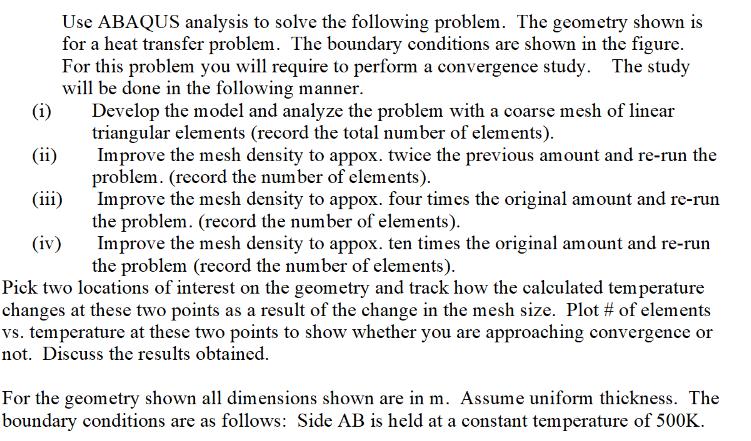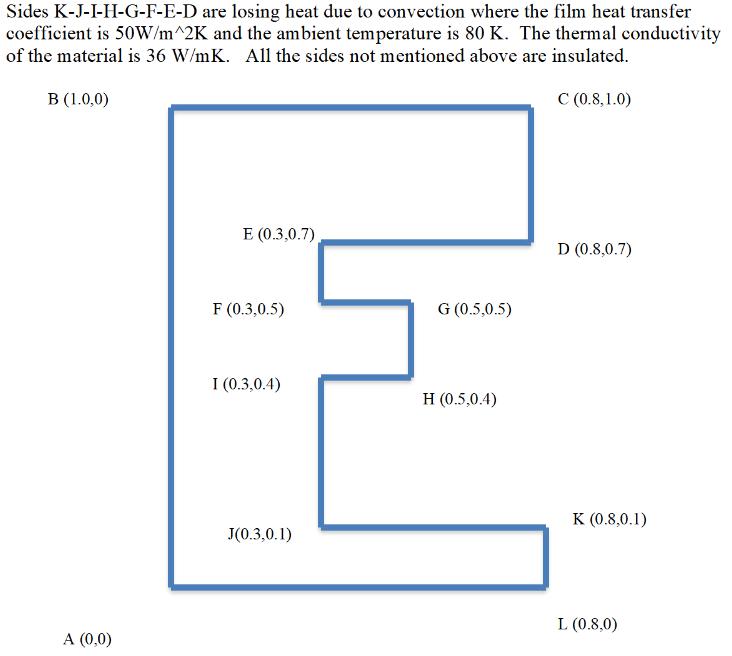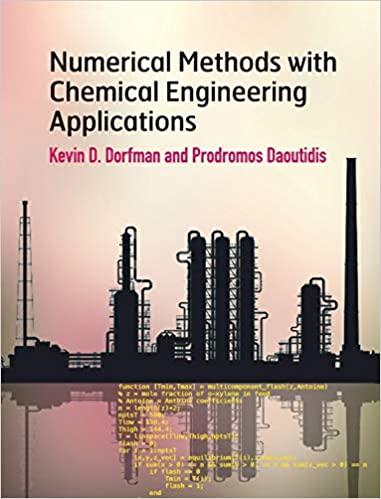Answered step by step
Verified Expert Solution
Question
1 Approved Answer
Use ABAQUS analysis to solve the following problem. The geometry shown is for a heat transfer problem. The boundary conditions are shown in the


Use ABAQUS analysis to solve the following problem. The geometry shown is for a heat transfer problem. The boundary conditions are shown in the figure. For this problem you will require to perform a convergence study. The study will be done in the following manner. Develop the model and analyze the problem with a coarse mesh of linear triangular elements (record the total number of elements). (ii) (iii) (iv) Pick two locations of interest on the geometry and track how the calculated temperature changes at these two points as a result of the change in the mesh size. Plot # of elements vs. temperature at these two points to show whether you are approaching convergence or not. Discuss the results obtained. Improve the mesh density to appox. twice the previous amount and re-run the problem. (record the number of elements). Improve the mesh density to appox. four times the original amount and re-run the problem. (record the number of elements). Improve the mesh density to appox. ten times the original amount and re-run the problem (record the number of elements). For the geometry shown all dimensions shown are in m. Assume uniform thickness. The boundary conditions are as follows: Side AB is held at a constant temperature of 500K. Sides K-J-I-H-G-F-E-D are losing heat due to convection where the film heat transfer coefficient is 50W/m^2K and the ambient temperature is 80 K. The thermal conductivity of the material is 36 W/mK. All the sides not mentioned above are insulated. B (1.0,0) C (0.8, 1.0) A (0,0) E (0.3,0.7) F (0.3,0.5) I (0.3,0.4) J(0.3,0.1) G (0.5,0.5) H (0.5,0.4) D (0.8,0.7) K (0.8,0.1) L (0.8,0)
Step by Step Solution
★★★★★
3.55 Rating (165 Votes )
There are 3 Steps involved in it
Step: 1
1 Model Development a Create the 2D geometry in your preferred CAD software or use ABAQUSs builtin geometry creation tools b Define the material prope...
Get Instant Access to Expert-Tailored Solutions
See step-by-step solutions with expert insights and AI powered tools for academic success
Step: 2

Step: 3

Ace Your Homework with AI
Get the answers you need in no time with our AI-driven, step-by-step assistance
Get Started


